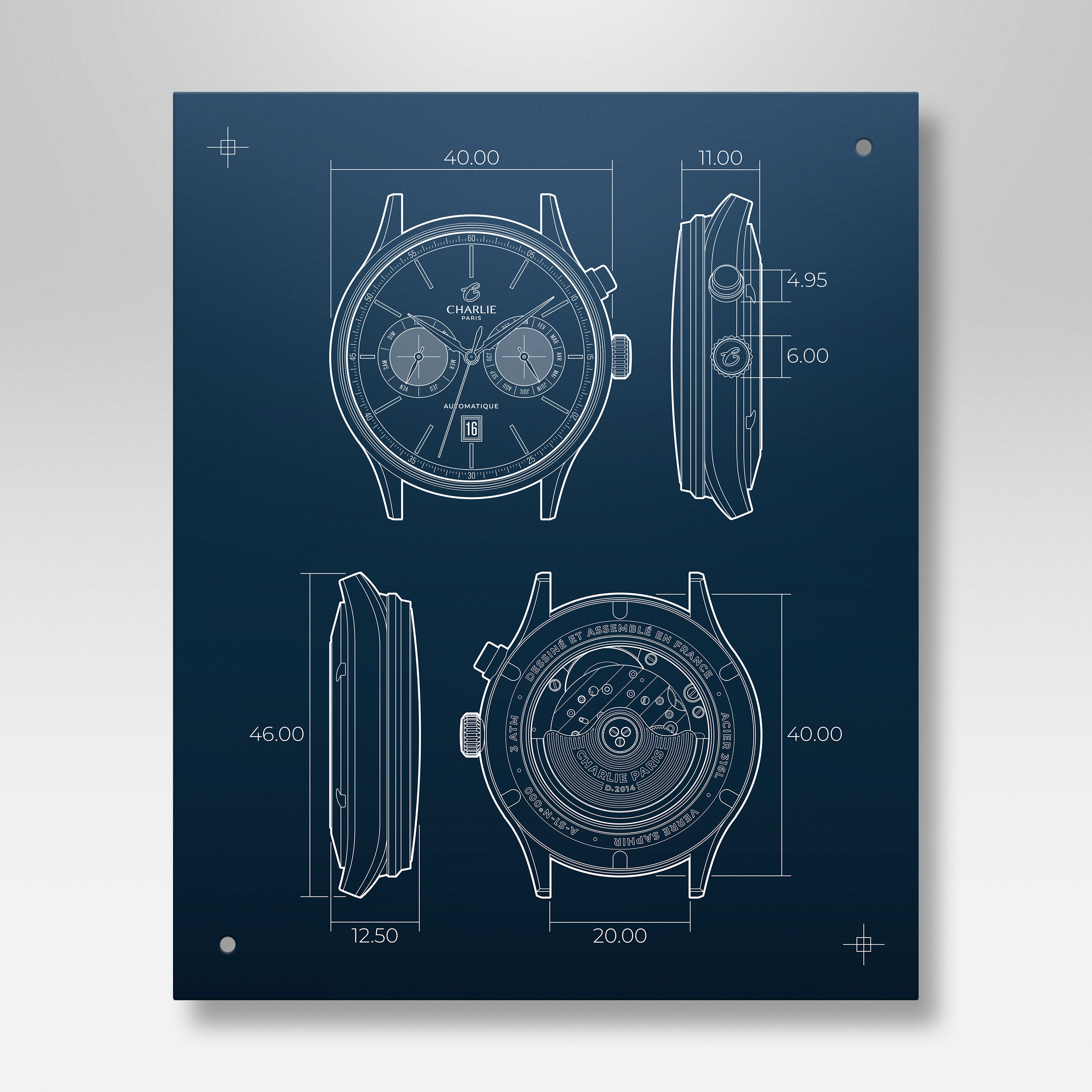
Automatic movement of a watch: How does it work?
The movement of a watch is the mechanism that allows a watch to work. To fully understand how an automatic watch movement works, you must first learn about its main components.
Here are its main components :
- The rotor : This is the oscillating mass of the mechanism. In short, it is a semi-circle-shaped weight attached to the movement. It rotates 360° according to the movements of the wrist and, thanks to a series of cogs, allows the barrel spring to be wound, thus providing mechanical energy to the watch.
- The crown : This is the small dial located on the right side of your watch. It is fixed on the winding stem and is used to wind the barrel spring.
- The barrel : It is a band of elastic steel which provides the energy necessary for the movement when it is cocked, that is to say tense. The barrel drives the train of the watch, activated by the unwinding of a spring it contains, called a barrel spring.
- The transmission system (called gear train): It transmits the energy accumulated in the barrel spring to the escape wheel via a series of gears.
- The escape wheel : This is the central part of the gear system which will distribute energy both to the regulating organ as well as to the rest of the watch once regulated.
- The regulating organ is made up of the spiral balance pair which is the heart of the watch. Thanks to its continuous back and forth movements (called oscillation) it will set the rhythm of the entire watch. The hairspring acts as a spring for the balance and allows it to return to the starting point at each alternation. In other words, the hairspring is used to beat time. And the anchor which is related to the exhaust. It will transmit the force of the barrel spring, acting as an intermediary between the chain of cogs and the balance, at each of the alternations of the balance.
The elements that allow the watch to function properly :
- Rubies: These are stones of great hardness which reduce friction and wear on the components of the mechanism.
- Platinum : It is a plate which supports all the components of the mechanical movement of a watch.
- The bridges : The bridges allow you to fix the parts which are located on the plate.

How an automatic watch movement works
Now that you are fully familiar with the main components of mechanical movement, let's take a look at how an automatic movement actually works. Here are the six main steps to better understand how your watch hands turn:
- Step 1: Automatic or manual winding
This step allows the watch to accumulate the energy necessary for its proper functioning. There are two ways to wind your watch: automatically using wrist movements which turn the rotor and thus wind the barrel spring, or manually by turning the crown yourself.
- Step 2: Storage
Once the energy has been recovered by the watch, it is stored. More precisely, the energy accumulates in the barrel which contains a long spring, winding tightens this spring.
- Step 3: Transmission
This step allows the accumulated energy to be delivered via a chain of cogs. The transmission system transfers energy to the regulating organ (step 4) via the escape wheel which will then redistribute this energy once regulated to the watch display (step 5).
- Step 4: Regulation
Energy is controlled by the oscillation of the spiral balance in direct connection with the anchor. Regulation is located at the end of the chain and acts on all the components before it. The role of regulation is to “brake” the energy of the spring.
- Step 5: Display
Thanks to the constant regulation carried out in the previous step, the anchor delivers regular operation to the entire mechanism. With each series of beats of the balance, the escapement makes the link with the cogs on which the hands of the watch are driven. That's it, you're on time!
As you can notice, the operation of an automatic movement is not linear, there is a back and forth between the transmission and the regulation. From an aesthetic point of view, automatic watches have a nice advantage. The seconds hand moves fluidly thanks to the combination of small jumps, unlike the second hand of a quartz watch which makes one jump every second.












Leave a comment
This site is protected by hCaptcha and the hCaptcha Privacy Policy and Terms of Service apply.